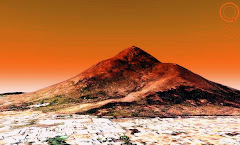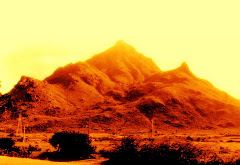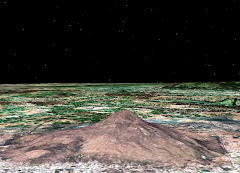
Arunachala New Year to everyone.
The Common Man's Avatar Sri Sadhguru Nannagaru

GANDAKYAS CAIVA DESE CA SALAGRAMA STHALAM MAHAT
PASANA TAD BHAVAM YAT TAT SALAGRAMAM ITI SMRTAM
(HARI BHAKTI VILASA 5/296 From GAUTAMIYA TANTRA )
As per Gautamiya Tantra, near the kali - Gandaki river, there is a big place called Shalagram.The stones which appear in that place are called shalagram shila. According to the Hindu tradition this stone is the shelter for a small insect known as "Vajra-Keeta" that has a diamond tooth which cuts through the Shaligram stone and stays inside it. The Saligram stones are hundreds of million years old when the Himalaya was an ocean floor. The marks on the Shaligram gives it a special significance, with the pattern often representing that of Sudarshan Chakra, the Discus of Lord Vishnu. The Shaligrams come in different colours, such as red, blue, yellow, black, greeen. All the varities are considered very sacred. The yellow and golden colour Shaligrams are considered most auspicious and bestow immense wealth and prosperity to the devotee. The Shaligrams of different shapes are often associated with different incarnations of Lord Vishnu such as Narasimha Avatar, Kurma Avatar and so on. According to the Vaishnavas the Shaligram is the "dwelling place of Lord Vishnu" and any one who keeps it, must worship it daily. He must also adhere to the strict rules such as not touching the Shaligram without bathing, never placing the Shaligram on the ground, avoiding non-vaishnavaite (or non-satvic) food and not indulging in the bad practices. The Lord Krishna himself mentions the qualities of Shaligram to 'Yudhishtra' in the Mahabharta. Most of the Shaligrams are considered auspicious, some are very sacred, while others are considered to bring good luck, money, peace, sons and so on. The temples can use any kind of Shaligrams in their rituals. The place where the Shaligram stone is found is itself known by that name and is one of the 108 sacred pilgrimage places for the " Vaishnavas" outside India. In fact such is the auspiciousness of this place that the Puranas mention that any stone from this land is equally sacred to Shaligram.

According to the religious text of Devi Bhagwate (and other scriptures) to kill demonJalandhar Lord Vishnu have to destroy Sati Brindha's sati dharma. When he did that Sati Brindha gave four seeming desecrations to Lord Vishnu to become stone, grass, tree, plant. To wash away this reaction Lord Vishnu took four avatars (incarnations). He became stone (Sri Saligram) grass (Kush) tree (Pipal) and plant (Tulsi). from this time onwardse the Saligrams are considered to be most auspicious to behold and to worship.
There is a place where we find much bigger shaligram. This shaligram is the largest in the entire universe.
It is not near Kali Gandaki River but the river is in the shaligram.
This Shaligram is the manifestation of Vishnu.
This shaligram is Arunachala.

The source of all.










| Provided by online degree advantage. |